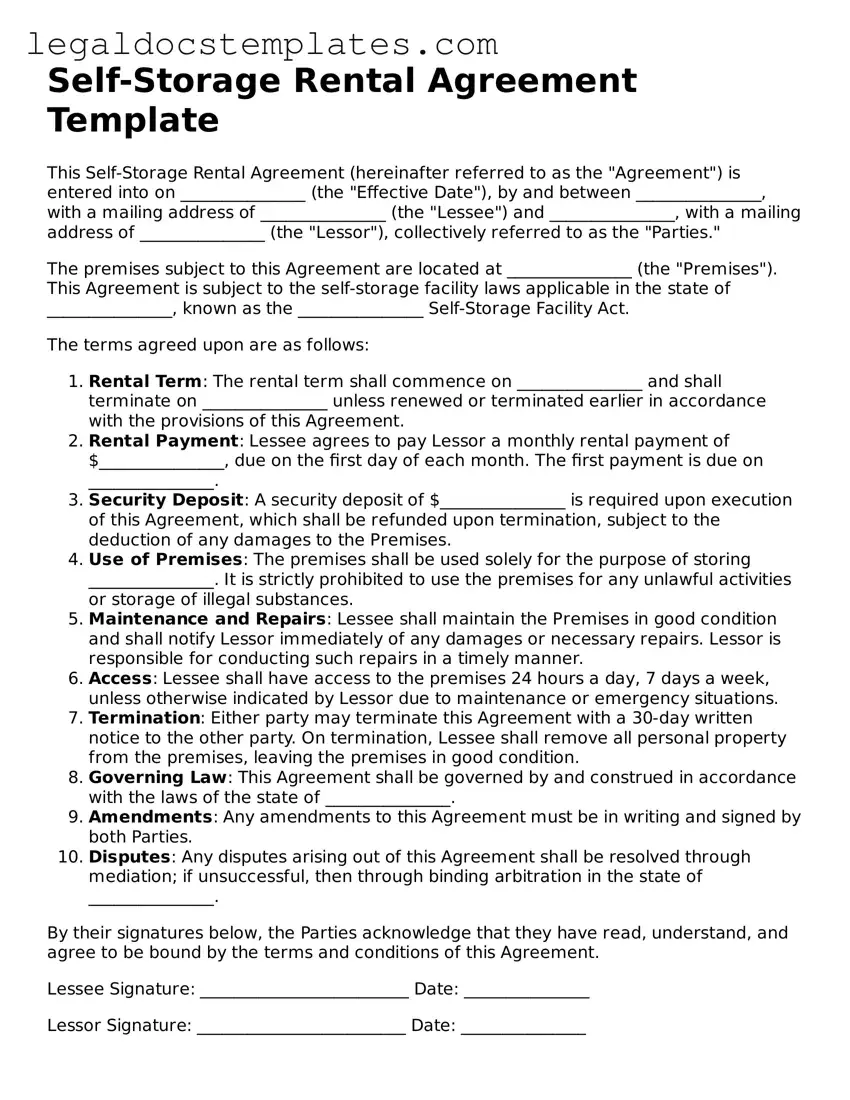When filling out the Self-Storage Rental Agreement form, people often make a number of common mistakes. These errors can lead to misunderstandings or issues down the line, so it's important to approach this task with care and attention to detail. One such mistake is not reading the agreement in full before signing. The agreement contains important information about terms of use, payment, and what happens in case of a default. By not thoroughly reviewing each clause, renters risk agreeing to terms that may not fit their needs or misunderstandings about the rules and regulations of the storage facility.
Another common error is failing to provide complete or accurate personal information. The form typically requires details like full name, address, and contact information. Inaccurate or incomplete information can cause delays or complications in the rental process. It's crucial to double-check all entries for accuracy to ensure the rental process proceeds smoothly.
Many also overlook the importance of accurately describing the items to be stored. The Self-Storage Rental Agreement form often includes a section for tenants to list the items they plan to store. This is not only for organizational purposes but also for the protection of both the tenant and the facility. If items are not properly described or omitted, it might lead to issues with insurance claims or disputes about what was stored in the event of theft or damage.
Failing to notice the payment terms is another frequent oversight. The agreement outlines the monthly rent, due dates, and any late fees or penalties for non-payment. Tenants who skip over this section might mistakenly assume their payment terms or schedule, leading to late fees or, in severe cases, eviction from the storage unit.
Not understanding the facility's policies on late payments or defaults is a significant error as well. These policies are typically detailed in the agreement and knowing them in advance can help tenants plan accordingly and avoid unnecessary complications. For example, the agreement may specify a grace period for late payments before late fees are applied or outline the process for reclaiming property if a payment is missed.
Ignoring the conditions around the termination of the rental agreement is a mistake that can have financial repercussions. Tenants need to be aware of how much notice they need to give before moving out and any fees associated with early termination. Without this knowledge, they may end up paying for extra months or incur fees for not adhering to the termination procedures.
Another pitfall is not inquiring about the security features of the storage facility. While this may not directly relate to filling out the form, understanding what security measures are in place (e.g., cameras, gated access, on-site staff) is crucial for ensuring the safety of stored items. Tenants should ask questions and ensure they are comfortable with the facility’s security before completing the agreement.
Finally, tenants sometimes forget to ask about or properly note the access hours or restrictions for the storage facility. Knowing when you can access your stored items is essential, especially for those who may need to retrieve things outside of regular business hours. Failure to clarify this information can lead to frustration and inconvenience.
By avoiding these common mistakes, individuals looking to rent a self-storage unit can enjoy a smooth and seamless process, ensuring their possessions are safely stored according to their expectations and the facility’s standards.
